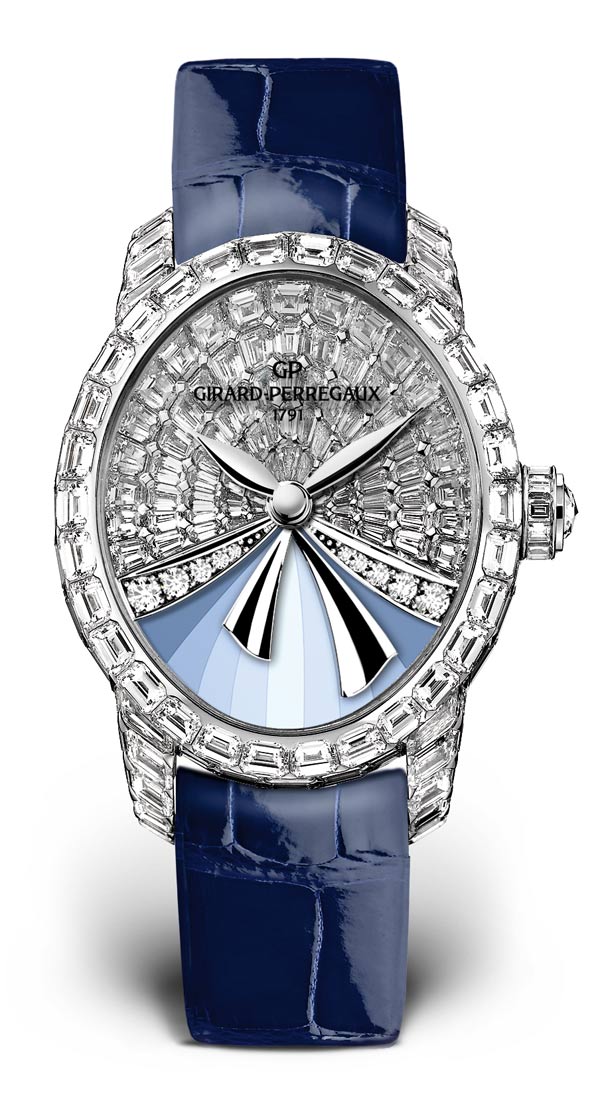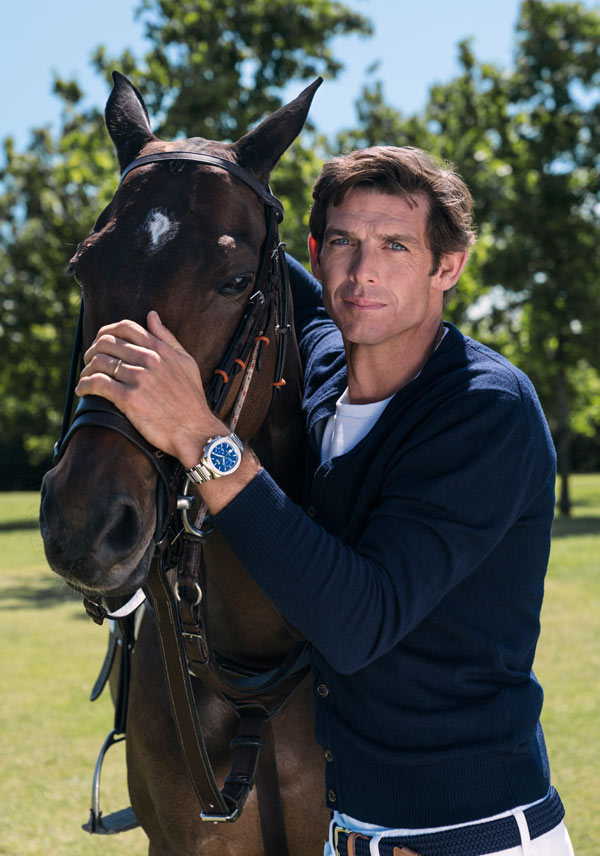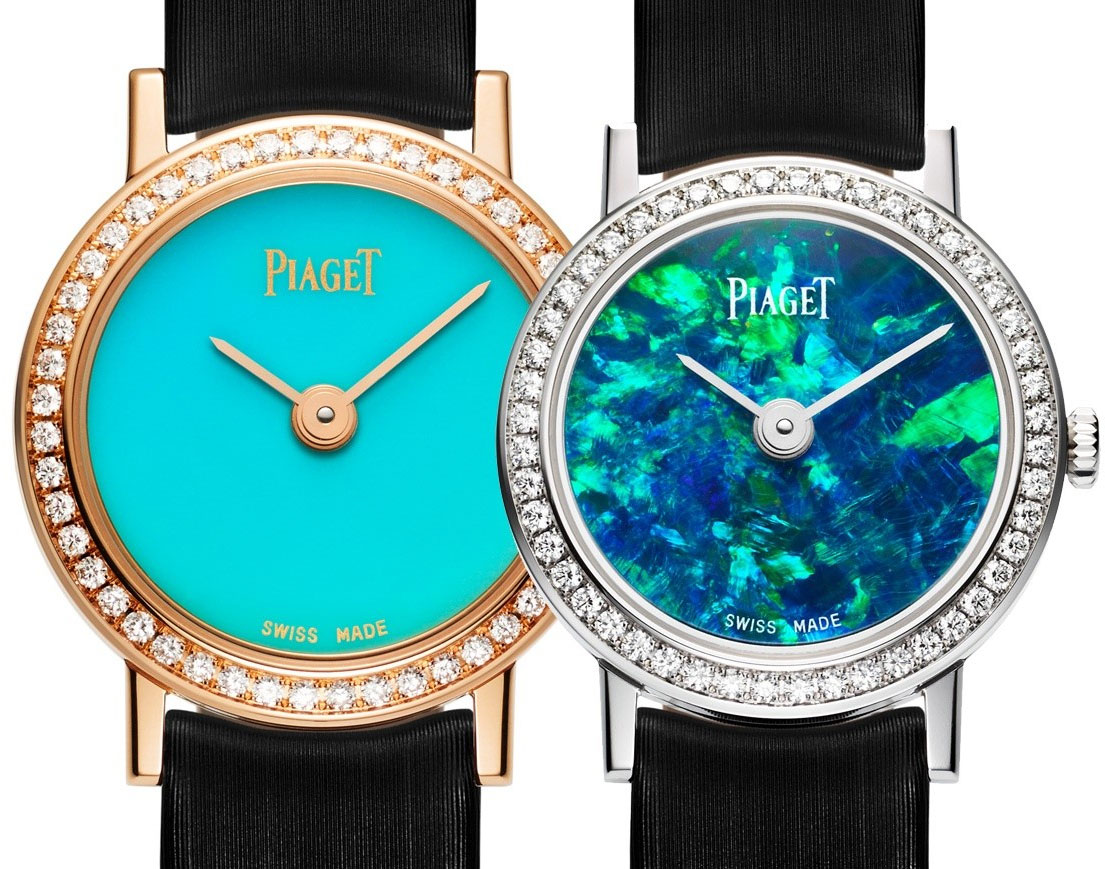A look at the artistic techniques that the six finalists in the Artistic Crafts category of the Grand Prix d’Horlogerie de Genève 2017 showcase takes us from a small village in the Val-de-Travers in Switzerland as far as Japan. A cabinet of curiosities including camel bones, Longchamp, peonies, Jokers, duck feathers, Copernicus, lasers and Japanese lacquerwork gives a glimpse of the poetic diversity of these artistic pieces, that might be inspired by astronomy, the cinema or flowers.
Gravure fleurisanne
Gravure fleurisanne is the star of the L.U.C XP Esprit de Fleurier Peony by Chopard, taking its name from the village of Fleurier, where the technique was developed in the 19th century. The relief engraving is executed by an artisan, who carves away the metal around the motif, making it stand proud of the background. The flowers and arabesques typical of fleurisanne engraving go back to the name of the village, which was known for its abundant flowers. Chopard has chosen peonies to decorate the eight pieces in this limited edition. The gilded diamond-set blooms stand out against the finely stippled white gold background, and the bridges and micro-rotor of the self-winding manufacture movement are given the same gilding and carving treatment.
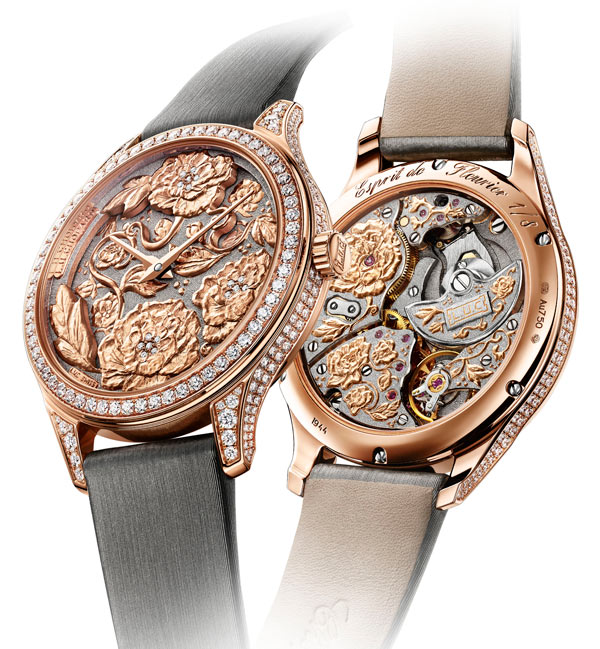
L.U.C XP Esprit de Fleurier Peony © Chopard
Persian miniature-painting, laquer and feathers
Our next stop is the middle-east and ancient Persian miniature-painting, an art well-known from book illustrations. Powdered camel bone was often used in these fantastically detailed paintings, which were executed with brushes made of squirrel or Persian cat hairs. Hermès uses this Oriental technique and material for the dial of the Slim Promenade de Longchamp, illustrated with a romantic Parisian scene inspired by a 1960s scarf design by Philippe Ledoux. The equally ancient technique of Japanese lacquer features on the dial, bridges and double caseback of the one-of-a-kind Aki-No-Kure watch by Voutilainen. The famous Unryuan studio has depicted an abstract autumnal scene inspired by philosophical reflections on the circle of life. Feather work is another traditional craft, born in France at the end of the 16th century. The art reached its zenith in dressmaking and millinery from 1860 up to the outbreak of the First World War. Here, miniature feather marquetry occupies the entire dial of the limited edition presented by Piaget this year. The feather artist who created the piece selects the feathers (duck, peacock and cockerel), cleans them with soap, stabilises them with steam, recuts, smooths and assembles them into a harmonious multicoloured iridescent pattern. The large feathers on the strap recall the flamboyant feathered decorations commonly seen in the headwear fashions of yesteryear.
Here is the thinnest automatic wristwatch on the planet. It’s more than that however, and within this Week on the Wrist inspection, I came to understand that the Piaget Watches First Copy Replica Altiplano 43mm Automatic might only be defining a new category of utterly tasteful everyday watches. An ultra-thin doesn’t have to be only for a suit and tie type of guy anymore, and this opinion proves that. The Altiplano 3mm Automatic was declared at SIHH 2010, and they’re only hitting retailers at the U.S. at the moment. What was Piaget up to all this time? Simple really. They were maximizing a totally stunning automatic movement, the 2.35 millimeter 1208P, a motion that any true watch enthusiast has to appreciate because a work of art. Piaget is known both for its own thin mechanical watches and its function in the field of high jewelry. It is also known for its complex thin watches, like the Emperador Coussin Tourbillon Automatic, the world’s thinnest automatic tourbillon, and the usage of high jewelry in complex wristwaches. The new Altiplano is a totally modern and masculine watch, a watch that’s sized for now but constructed with yesterday in mind.
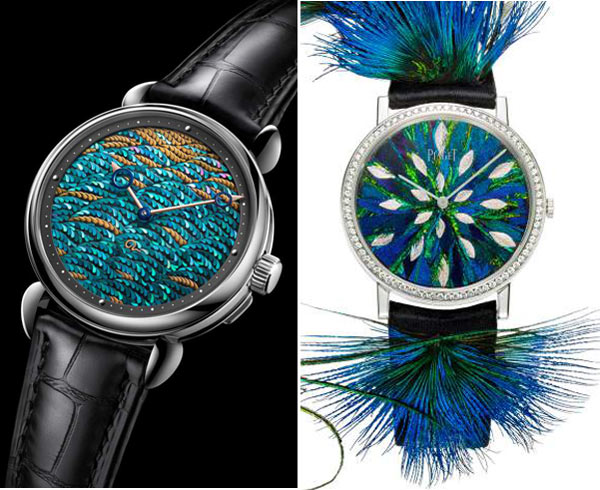
Aki-No-Kure de Voutilainen et Altiplano Art & Excellence Marqueterie de Plumes de Piaget
Laser sculpture
The pièce de résistance in this category is the Métiers d’Art watch by Vacheron Constantin, which combines innovative laser sculpture, used to cut out the sapphire zodiac signs, traditional gold engraving (the Earth and the Sun), graining (the sea) and hand-painting for the midnight blue dial background. This technical inventory does not do justice to the beauty of the piece, however. The mysterious transparency of the superb zodiac symbols, inspired by drawings by 17th-century cartographer Andreas Cellarius, contrasts with the glowing sun in the centre. The Earth and Moon are animated in accordance with the rules of astronomy by a highly precise mechanism that requires correction by just one day every 8000 years! The cosmic scene is undisturbed by hands: the hours and minutes are indicated by two gold triangles that revolve discreetly around the outside of the dial.
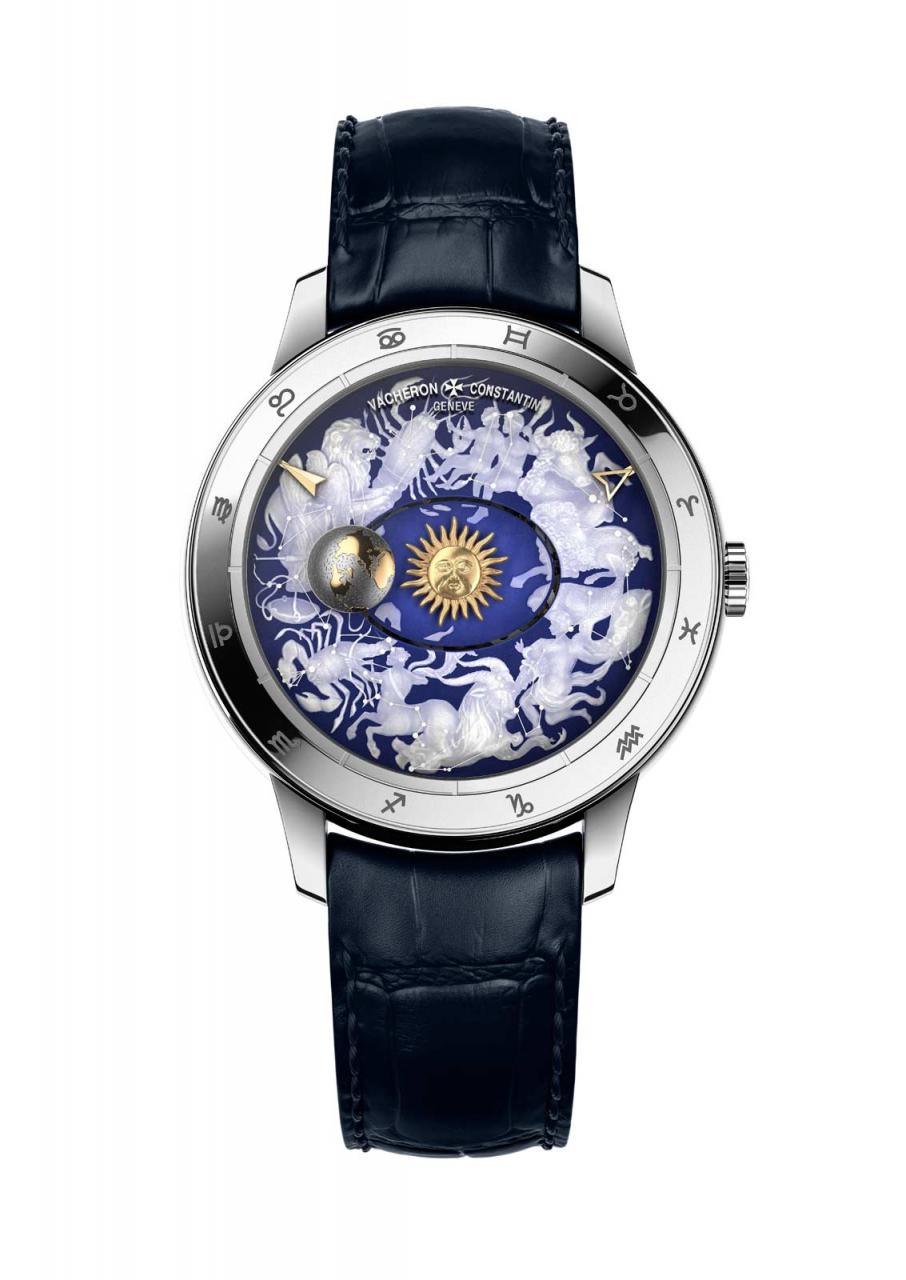
Konstantin Chaykin’s Joker watch uses the moon to animate the smile of the pop-art-inspired face, and the hours and minutes are its eyes. This eccentric piece is unquestionably the enfant terrible of this category!
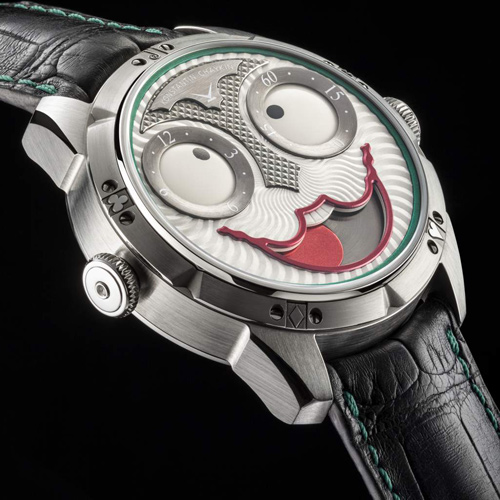
Joker de Konstantin Chaykin
Watch the ceremony

